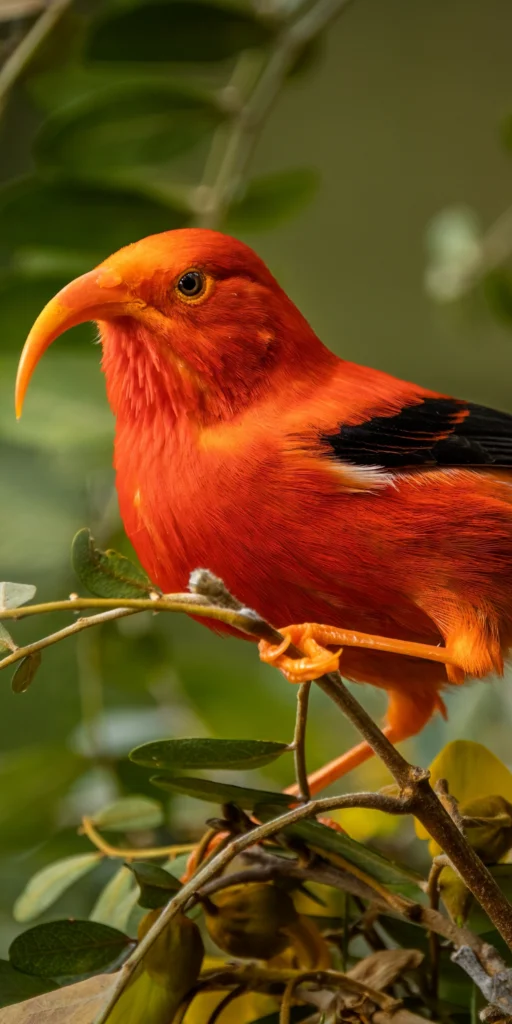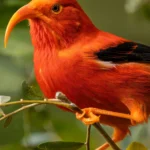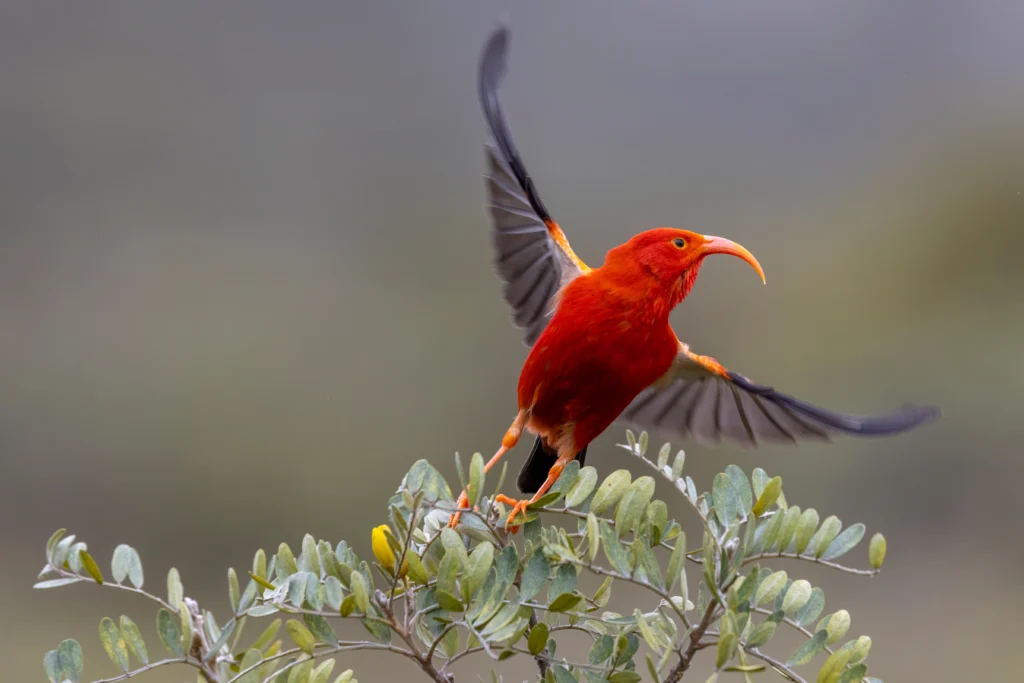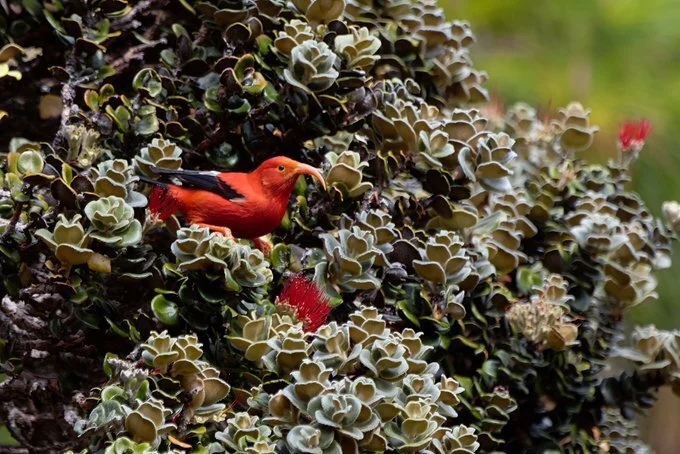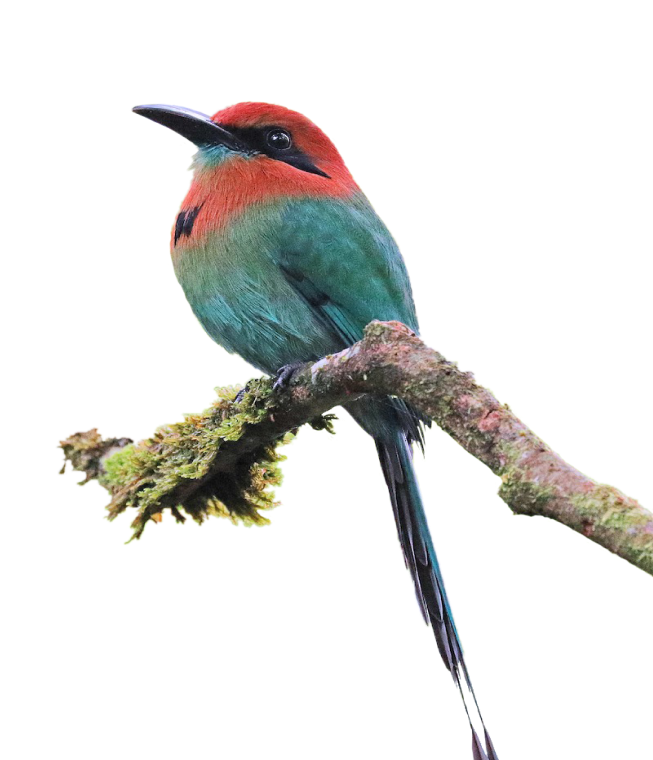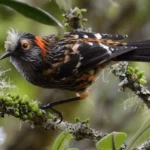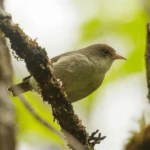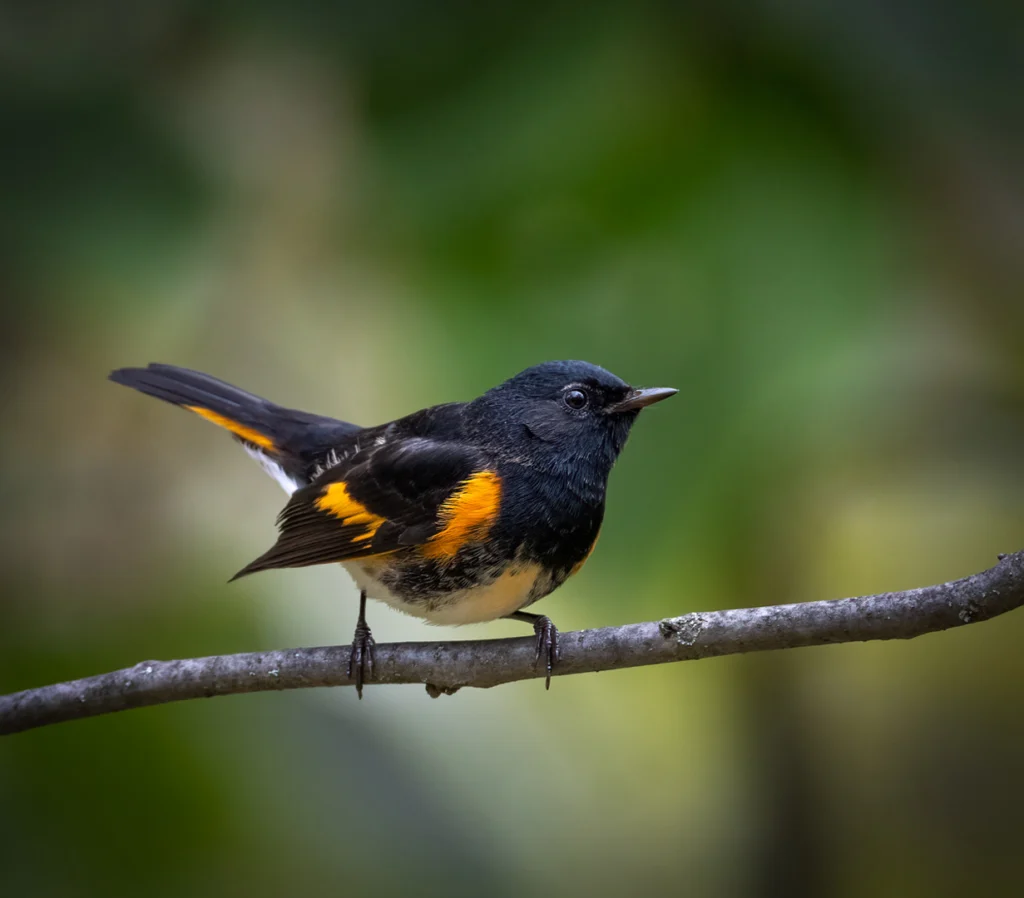
Overview
About
The eye-catching ʻIʻiwi (pronounced “ee-EE-vee”) was once one of the Hawaiian Islands’ most common forest birds. In Hawaiian moʻōlelo (stories, myths), the demigod Maui particularly loved the native forest birds and painted them in bright reds and golds. Maui made the ʻIʻiwi especially colorful, with a unique call that resonated throughout the forest. Early Hawaiians considered their native birds’ red colors to be sacred and used ʻIʻiwi and other bird feathers to create elaborate cloaks, helmets, and leis. This garb became a mark of societal rank and was worn only during special ceremonies or into battle.
Bird catchers, called kia manu, trapped large numbers of the then-common native forest birds, as thousands of feathers were needed to make a single cloak. Most bird catchers took only a few feathers from each bird, releasing them back into the wild to preserve the precious resource. Today, Hawaiian artists carry on this tradition by using dyed feathers from common domestic birds such as geese and pheasants.
Hawaiians treasure the ʻIʻiwi, but this signature bird is becoming scarce. Like other native species such as the Kiwikiu and the Palila, it has disappeared from most of its former range.
Threats
Birds around the world are declining, and many of them are facing urgent, acute threats. The Hawaiian Islands’ honeycreepers must contend with threats from avian malaria, habitat loss, non-native species, and climate change, making their existence even more precarious.
Avian malaria spread by introduced mosquitoes is deadly, but the habitat of the ʻIʻiwi and other honeycreepers is also greatly impacted by invasive species. Two introduced plant fungi have caused a syndrome called Rapid ʻŌhiʻa Death (ROD) that causes the large-scale dieback of the ʻōhiʻa trees that provide the nectar ʻIʻiwi feed on. While some ʻōhiʻa seem to be resistant, ROD has spread widely on Hawaiʻi and Kauaʻi, with a few detections on Oʻahu and one infected tree on Maui. There is currently no known cure.
Introduced mammals also take a toll on the ʻIʻiwi and other native forest birds. These birds fall victim to non-native predators, including cats, rats, and mongooses, and habitats are lost due to uncontrolled grazing by introduced feral pigs, sheep, deer, and goats.
Cat & Invasive Species
Introduced species have taken a tremendous toll on Hawaiʻi’s honeycreepers. A mosquito species introduced to the islands carries deadly avian malaria and avian pox. Ninety percent of ʻIʻiwi bitten by a malaria-infected mosquito do not survive.
Habitat Loss
As is the case with other Hawaiian forest birds — many of which have gone extinct — the ʻIʻiwi has declined due in large part to widespread habitat loss caused by introduced species.
Climate Change
The ʻIʻiwi is highly susceptible to avian malaria carried by mosquitoes. These introduced insects are increasingly able to move into the ʻIʻiwi’s high-altitude forest retreats as the climate warms.
Conservation Strategies & Projects
ABC’s Hawaiʻi Program is committed to protecting remaining habitats and native bird populations, working in partnership with state and federal agencies, NGOs, and local communities. Together, we are addressing the most urgent threats facing birds like the ʻIʻiwi and securing a future for Hawaiʻi’s imperiled honeycreepers.
Mosquito Control
Birds, Not Mosquitoes, a multi-agency partnership that includes ABC, has been working on techniques to control mosquito populations across thousands of acres of forest to save native Hawaiian bird species from extinction. To help stop the spread of avian malaria, we’re working on advances in biotechnology aimed at suppressing or even eliminating introduced malaria-carrying mosquitoes.
Predator Control
ABC is helping fund rat control efforts on Kauaʻi in cooperation with the Kauaʻi Forest Bird Recovery Project and with funding from the National Fish and Wildlife Foundation and other organizations.
Address Ocean/Island Issues
ABC’s Hawaiʻi Program is committed to protecting and restoring the archipelago’s habitats and endemic birds, working in partnership with many local, state, and federal organizations.
Bird Gallery
The ʻIʻiwi is a stunning sight, with a bright red body, black wings and tail, and a long, salmon-colored, decurved bill. The white patch on its inner wing feathers and yellow eyering are visible only at close range. Males and females look alike. Juvenile ʻIʻiwi are dull yellow with black spots and a dusky brown bill. Juveniles showing more black are called ʻIʻiwi pōpolo; those with more yellow are ʻIʻiwi pōlena.

Sounds
The song of the ʻIʻiwi is a unique collection of whistles, sometimes compared to balloons rubbing together or a squeaky hinge. Their call is a loud, somewhat squeaky whistle.
Daniel Lane, XC27366. Accessible at www.xeno-canto.org/27366.
Frank Lambert, XC58938. Accessible at www.xeno-canto.org/58938.
Thomas G. Graves, XC327825. Accessible at www.xeno-canto.org/327825.
Habitat
Most ʻIʻiwi reside in cool montane forests at altitudes between 4,000 and 6,200 feet, above the lethal “mosquito zone.” During the nonbreeding season, they may disperse in short altitudinal movements in search of blooming trees.
- Breeds in mesic and wet forests of native ʻōhiʻa lehua and koa trees with native tree fern, kōlea, and naio understory
- Utilizes māmane trees in drier, higher-elevation foraging habitats
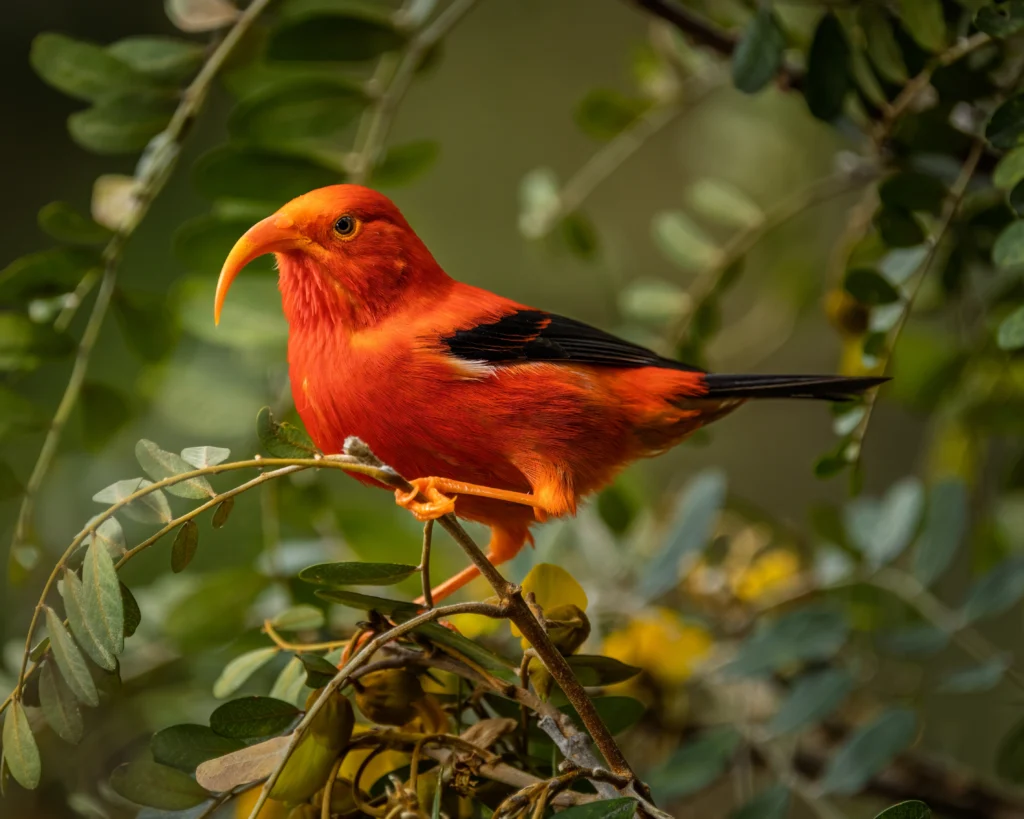
Range & Region

Specific Area
Previously throughout the main islands, now mainly on Hawaiʻi and Maui, with scattered detections on Kauaʻi
Range Detail
The ʻIʻiwi’s breeding range is currently restricted to montane native forest above 4,000 feet due to the presence of disease-carrying mosquitoes at lower elevations. After the breeding season concludes, this species disperses to follow the flowering of nectar-producing native plants.
Did you know?
Although ʻIʻiwi once moved both upslope and downslope in seasonal altitudinal migrations, low elevation movements have become more rare, likely a response to the threat of lethal, mosquito-borne avian malaria and pox.
Life History
ʻIʻiwi are usually spotted foraging in the middle and upper areas of the forest canopy, more rarely on tree trunks and larger branches, and never on the ground. This honeycreeper drinks nectar with a specially evolved, brushy-tipped tubular tongue, often hanging upside-down as it feeds. It also accesses nectar by piercing or tearing holes into the base of flowers.

Diet
The ʻIʻiwi’s long, downward-curving bill is specialized for probing tubular native lobelia and mint flowers to reach their nectar. As these plants have become less common due to habitat loss, ʻIʻiwi now primarily feed on the flowers of the native ʻōhiʻa tree. It also eats spiders, moths, and other insects.
Courtship
The peak breeding season for the ʻIʻiwi is from February to June. Males and females chase each other as part of courtship, and the male displays by singing while swaying to and fro and fluttering his wings as he hops between tree branches. A male ʻIʻiwi will also feed his mate to establish and maintain their pair bond.
Nesting
The ʻIʻiwi’s cup-shaped nest is fashioned from ʻōhiʻa twigs, mosses, and ferns, with a softer lining of lichens, shredded leaves, and bark fibers. The nest is usually located high in the crown of a native tree. While both sexes contribute, the female ʻIʻiwi does most of the nest building.
Eggs & Young
The female ʻIʻiwi lays a clutch of one to three (usually two) eggs, which she incubates for 14 days. She also broods and feeds the young herself; her mate brings her food while she’s in the nest. Twenty-one to 24 days after hatching, the chicks fledge. Juvenile ʻIʻiwi are mottled with black and yellow-brown but soon molt into bright scarlet-and-black adult plumage.

